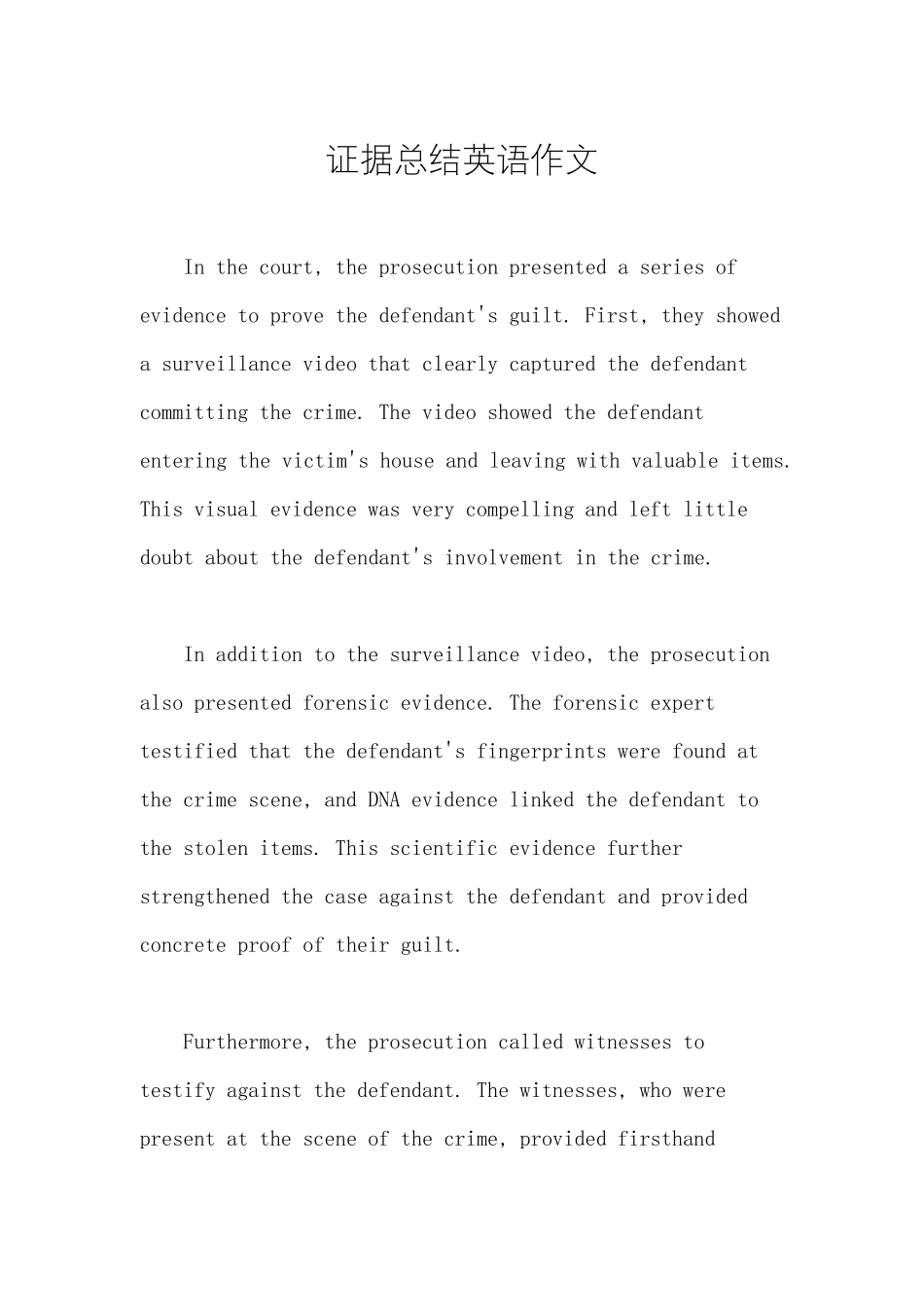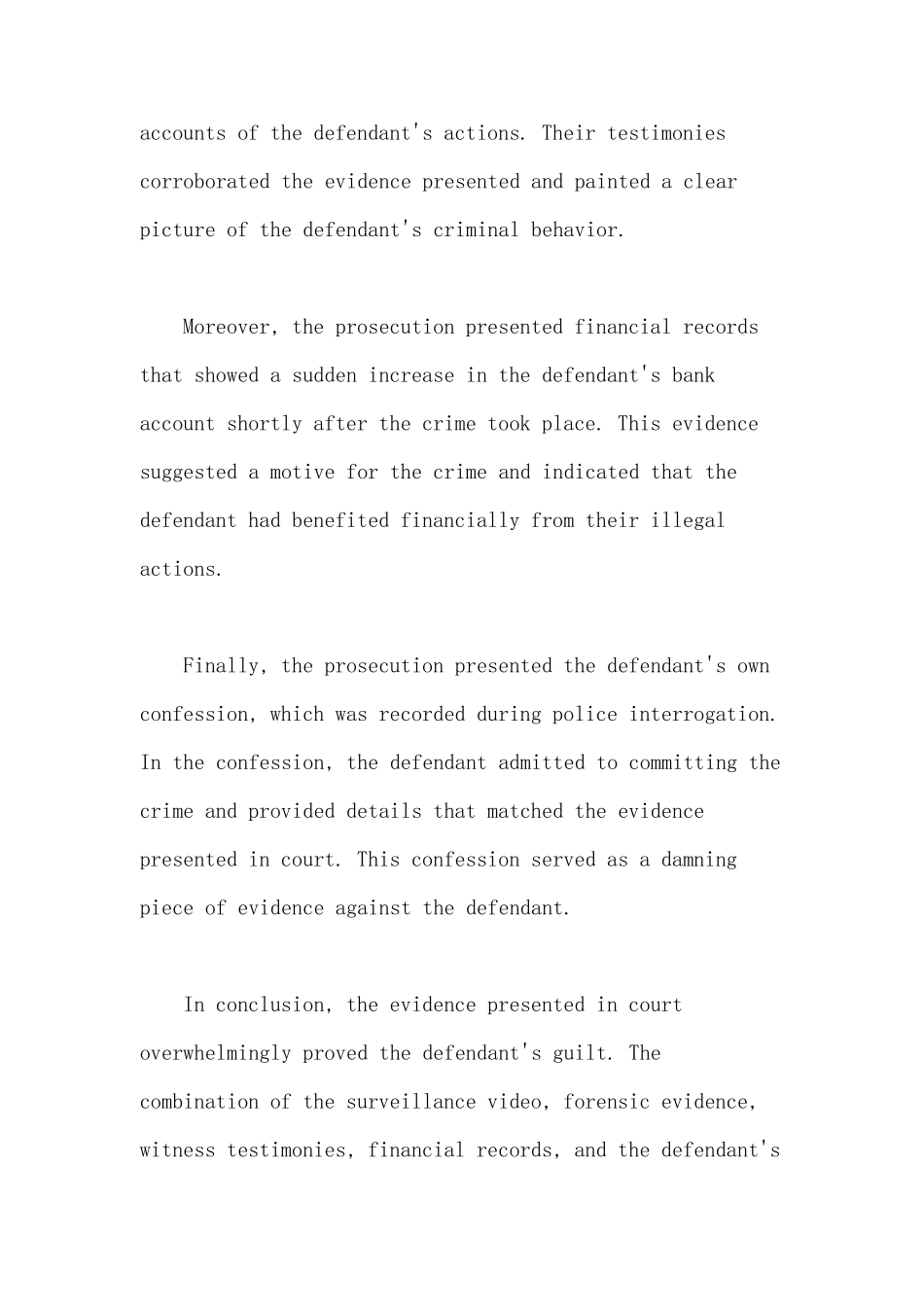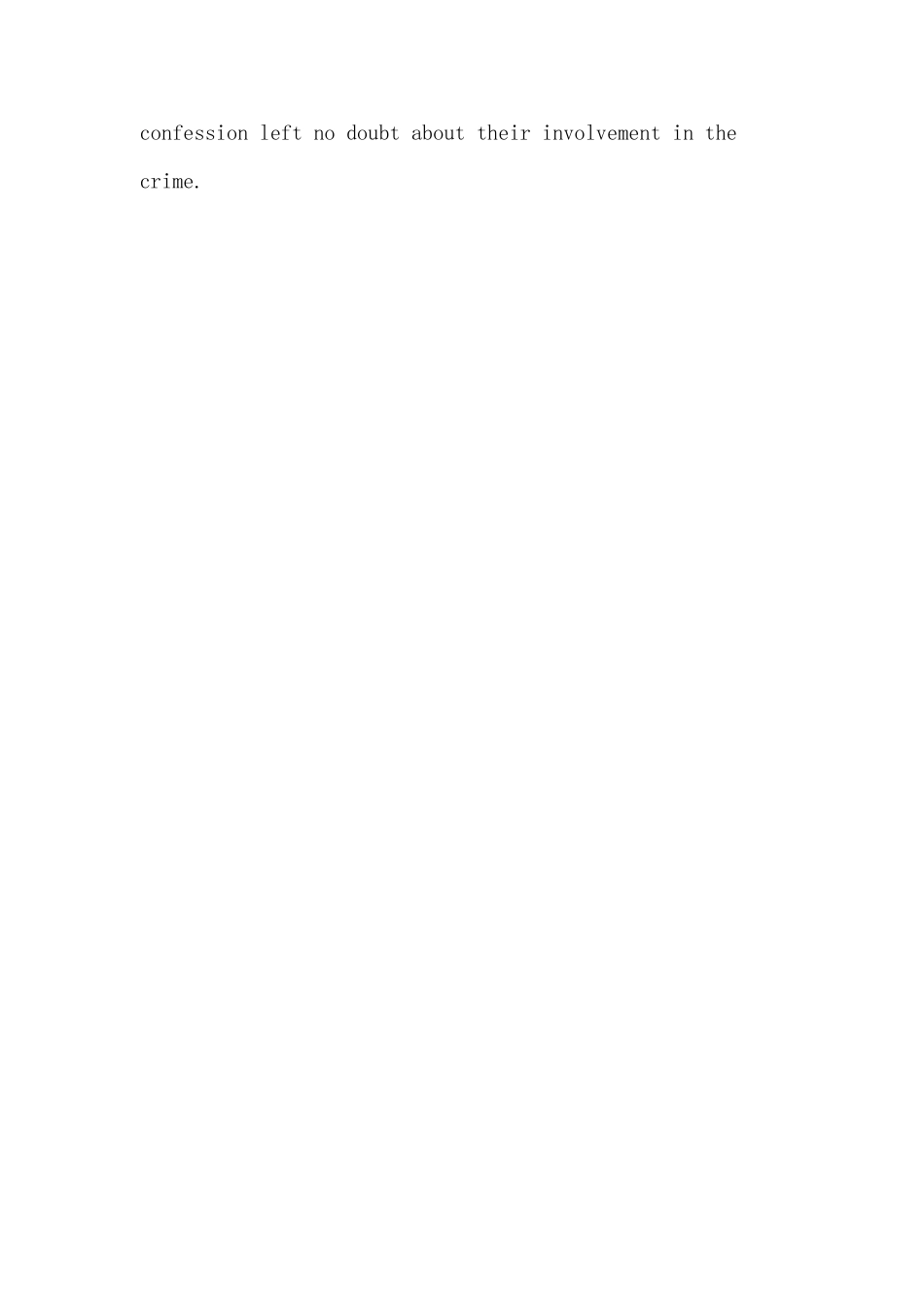证据总结英语作文 In the court, the prosecution presented a series of evidence to prove the defendant's guilt. First, they showed a surveillance video that clearly captured the defendant committing the crime. The video showed the defendant entering the victim's house and leaving with valuable items. This visual evidence was very compelling and left little doubt about the defendant's involvement in the crime. In addition to the surveillance video, the prosecution also presented forensic evidence. The forensic expert testified that the defendant's fingerprints were found at the crime scene, and DNA evidence linked the defendant to the stolen items. This scientific evidence further strengthened the case against the defendant and provided concrete proof of their guilt. Furthermore, the prosecution called witnesses to testify against the defendant. The witnesses, who were present at the scene of the crime, provided firsthand accounts of the defendant's actions. Their testimonies corroborated the evidence presented and painted a clear picture of the defendant's criminal behavior. Moreover, the prosecution presented financial records that showed a sudden increase in the defendant's bank account shortly after the crime took place. This evidence suggested a motive for the crime and indicated that the defendant had benefited financially from their illegal actions. Finally, the prosecution presented the defendant's own confession, which was recorded during police interrogation. In the confession, the defendant admitted to committing the crime and provided details that matched the evidence presented in court. This confession served as a damning piece of evidence against the defendant. In conclusion, the evidence presented in court overwhelmingly proved the defendant's guilt. The combination of the surveillance video, forensic evidence, witness testimonies, financial records, and the defendant's confession left no doubt about their involvement in the crime.


